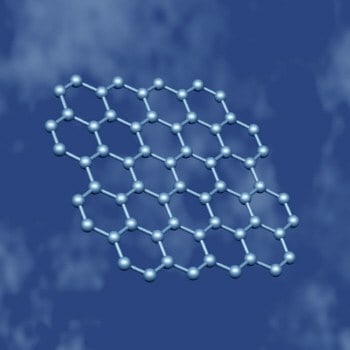Two teams of physicists have discovered previously unseen exotic behaviour in sheets of carbon atoms. The teams have shown that electrons move through the sheets as if they have no rest mass. They have also observed a minimum value of conductivity for the sheets and an unusual form of the quantum Hall effect (Nature 438 197 and 201).

Last year Andre Geim and co-workers at Manchester University in the UK and the Institute for Microelectronics Technology in Chernogolovka in Russia showed how to make graphene – two-dimensional sheets of carbon that are just one atom thick – from graphite, the form of carbon that is found in pencils. Now Geim and co-workers at Manchester, Chernogolovka and the Radboud University of Nijmegen in the Netherlands and, independently, Philip Kim and co-workers at Columbia University in New York, have explored the electronic properties of this novel form of carbon and have discovered that it is an excellent conductor.
In particular they discovered that the electrons in graphene behave like relativistic particles that have no rest mass and travel at about 106 metres per second. Although this is a factor of 300 slower than the speed of light in vacuum, it is still much faster than the speed of electrons in an ordinary conductor. Moreover, the electrons in most conductors can be described by non-relativistic quantum mechanics, whereas the electrons in graphene need to be treated as relativistic particles called massless Dirac fermions.
Both teams also observe a new “half-integer” quantum Hall effect, which is the relativistic analogue to the conventional integer quantum Hall effect that is seen for free electrons in semiconducting systems (and which is distinct from the fractional quantum Hall effect that has been observed in many-body systems, such as strongly interacting electrons in semiconductors). The quantum Hall effect is itself a variation on the classic Hall effect that is seen when a current flows through a material in the presence of an applied magnetic field. In this classic version of the effect a voltage builds up in the direction at right angles to both the current and the magnetic field.
Finally, both teams found that the electrical conductivity of graphene does not fall below a certain minimum value, even when there are no mobile electrons in the graphene sheet. “This is completely counterintuitive because in all other systems the conductivity disappears if no charge carriers are present,” says Geim.
Kim and colleagues also observed that the topology of the graphene gives rise to a Berry phase – a subtle quantum effect that has also been observed in a number of other quantum systems.
“These experiments demonstrate that graphene is not just another ‘smart material’,” says Geim. “It is full of surprises and shows far greater promise than one could reasonably hope for in a new experimental system. Indeed, studies of electron transport in graphene give us access to the rich and subtle physics of quantum electrodynamics (QED) in a bench-top condensed matter experiment.”



